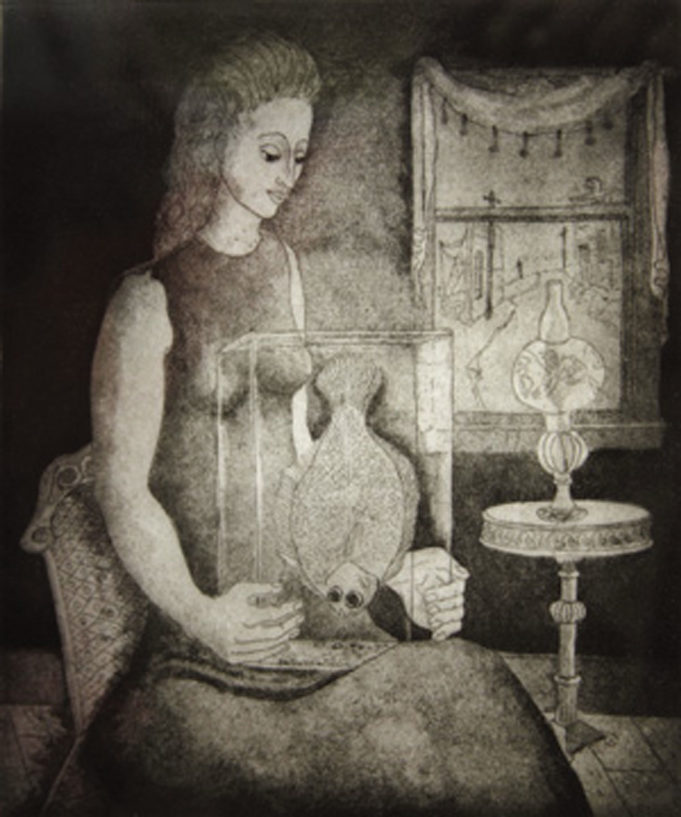Dallas Morning News architecture critic Mark Lamster and the paper’s former art critic, Rick Brettell, discussed North Texas museums and galleries before a public audience at the newspaper’s office as part of the paper’s Duets series last week.
Brettell proposed exactly what Dallas and Texas do not need: another art museum. Lamster first pitched the idea in a DMN column in November. After laying out the case for a hub for Early Texas Art, he noted that collectors of that genre have already met with staff of the Dallas Parks and Recreation Department and the Dallas Museum of Art to discuss the possibility of creating a central hub for theirs and others’ collections.
They envision a museum in Fair Park, possibly on the original site of the Dallas Museum of Art, to showcase the breadth and scope of Texas art. A hub for Texas art could also remove the disdain for “regional art,” Brettell argued, emphasizing that the collection would be historic, including pre-Texas indigenous art, but as a donor-driven collection, it’s likely the museum would be full of Early Texas Art. The broad genre encompasses art produced by or in Texas during the early to mid 20th century. Locally, the artists from that period include Bror Utter and Veronica Helfensteller, a few of the members who made up what was known as the Fort Worth Circle.
Wealthy patrons drive the art market, and no doubt these collectors want to boost the fame – and worth – of their collections. Many museums, including the Amon Carter Museum of American Art and the Kimbell Art Museum, were formed by wealthy collectors. Sometimes the drive to create a museum comes from the desire to get tax cuts. Sometimes museums develop to instill civic pride. But North Texas does not need another museum. Hoarding all of that great work in a single facility is irresponsible.
Texas is geographically vast. Art museums in smaller metro areas and rural Texas are a source of pride – the cultural equivalent of Friday night football games.
Many of them have substantial works of Texas art already. They avidly and passionately highlight their regional art collections and what it means to make art in the state. They include Abilene’s Grace Museum of Art, which emphasizes art by Texans, and Albany’s Old Jail Art Center, which received the estate of late Fort Worth artist and collector Larry Kleinschmidt. Huntsville’s Museum of Texas Arts formed thanks to a sizable donation by philanthropists George and Sue Russell. (No relation.) The San Angelo Museum of Art houses a major collection of Texas art and the Center for the Advancement and Study of Early Texas Art, the field’s foremost research center and consortium.
The Dishman Art Museum at Lamar University in Beaumont and the Wichita Falls Museum of Art at Midwestern State University are resources for students and hubs of the community. The Art Museum of South Texas in Corpus Christi, affiliated with Texas A&M University at Corpus Christi, collects Texas art from that region and highlights the intersection of borderlands art down to the rest of the Americas. The Martin Museum of Art at Baylor University regularly borrows from statewide collectors and other museums for exhibitions. The museum is free of charge.
These regional museums also cement the idea that art is part of the fabric of the state, even if they are part of Texas history classes. Regional art, as a larger movement, was conservative in flyover states. (Think: not California or New York.). While the more prominent artists of the era were from the Fort Worth Circle, they should not stay here, much less remain in a Dallas collection. Texas art is already not in the curriculum in mandated Texas history courses, further limiting the opportunities for students to learn about the state’s artistic history.
If donors really want to benefit the advancement of Texas art, and receive a tax break too, they should pony up the funds for statewide initiatives promoting their collections.













This is actually PROOF of the need of a powerful centralized museum in a major city. All the wonderful smaller museums, whose collections would be digitized and made familiar STATE-WIDE would actually benefit from a single, focused museum and research center. GREAT ARTICKE! Wrong conclusion.
Brother Russell would benefit from a trip to the wonderful small art venues around the State . I have, and ALL these small institutions are excited about the prospect to have the exhibitions they have conceived, and produced, in Beaumont , Tyler , Abilene etc ., to a bigger stage ,in a first class facility . The thrust of this effort is primarily to benefit our incredible artists , that produce some of the finest art in the country today! The doors to the big institutions have been closed for the most part to our Texas Talent , and that my friend is a travesty , that this new institution will resolve.Our foundation artists have been underserved for too long as well, and now is the time to create a museum that will put our historic artists in context with their Contemporary counterparts.